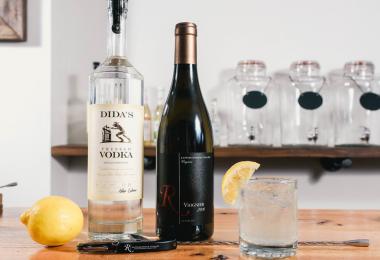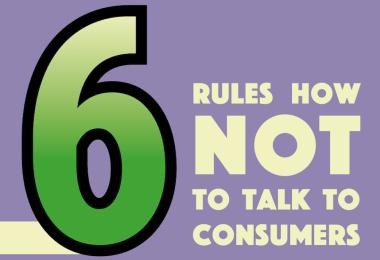Wine is inherently a discovery category. And people want to unearth, uncover, and reveal a story, much as they do with wine. While select wine audiences may be interested in the facts, figures, and data, it is the story that draws people in, to become a part of the brand, and ideally a loyal customer.
However, in a cluttered US wine market of 380m case sales per annum – of which two-thirds are produced by the top ten companies – getting wine to the shelf is a major task, much less getting an effective story told. So how do you capture the hearts and minds of an audience through great stories?
American author John Steinbeck once said: “A great lasting story is about everyone or it will not last. The strange and foreign is not interesting – only the deeply personal and familiar.” For an audience to find a small part of themselves in a story and feel a sense of identity is critical. A compelling story must also be adaptable across multiple platforms.
It’s also important to note what a story is not – branding and storytelling are not the same thing. Marketing and branding connect the audience to the attributes of the product or place, while stories connect to the people behind the product. The former is often highly designed and dominated by one-way messaging, devised and delivered with the intent to make sales and support marketing, while storytelling offers an insight into the company’s or brand’s beliefs, values, and personalities.
Why tell tales?
Storytelling has long been a tool used by sales people who learned early on that having a good tale to tell could boost their results. Recent brain research has discovered the reason stories are so effective is they appeal to both logic and emotion, and are therefore more easily remembered than other types of marketing. For this reason, storytelling for marketing purposes is taking off, spawning seminars, articles, and books on how to do it for maximum impact.
But it’s not easy to do well, and few people are adept at telling their own stories. Often, they are so close to the experience of producing the product that they might not be able to see what aspects of their story might interest outsiders.
Discovering your story takes work, and much like therapy, it can be a good idea to have an experienced external person who can listen, identify key attributes, and help craft or refine it. People inside the company may be too close to notice untold nuances, or they may be too attached to an existing point of view. Spend time and resources to clearly identify and understand the unique aspects of what makes your story stand out, and why an audience should want to listen. In an extremely fragmented category, any increase in retaining consumers is worth investing in.
It’s important to be aware that as storytelling rises in popularity, the stories told will need to be sharper, clearer, and more memorable, and less reliant on clichés.
Take time to establish your individual story within the cluttered environment. Depending on the audience, this can be cultural, historical, or technical. Marilisa Allegrini, a sixth-generation Italian producer and CEO of her namesake winery, makes time in any professional discussion to put her wines into context. “I don’t only speak on myself or company. I give context on the location, the history, and areas of viticulture with a point of view on Valpolicella,” she says. “When you explain the history and context of our family, people want to know more.” She says she likes to explain the family story, as there are few families that have been in business for six generations.
But she’s also happy to tell people about the battle that she and her two siblings had when they inherited the winery, and how they had to come together to fight hard for their heritage – turning it into one of Italy’s top brands along the way. This is what makes her story so memorable, because if a story is too ‘clean’ and lacks shade as well as light, it will come across as public relations and be forgotten.
Apart from telling the story to distributors, clients, and consumers, it’s also important to remember that tasting rooms and hospitality facilities are some of the critical platforms for stories – and you must ensure every aspect of the story can be reinforced at the property, by every employee. Allegrini believes this is the most intimate way to connect her brands with consumers: “Marketing is quality, packaging, promotion, campaigns, and support, but hospitality is by far the most intimate space where people can experience our story.”
Once the elements of a great story have been identified, the challenge is how to sow and spread those story seeds.
Keep the story simple and consistent
A consistent story from the source is also easier to remember for those who are charged with narrating, or re-telling the story. An employee, distributor partner, retail supporter, or brand advocate should all be able to recall and accurately repeat your story. “I always speak of my father’s vision and entrepreneurial spirit every time,” says Allegrini. “It is what has inspired us to continue to build our business, even from the early days after my father’s passing when my brother Walter would comment we needed to fight like lions to continue. My father is an intrinsic part of our story.”
The act of storytelling is not only limited to employees, brand ambassadors, or owners. If your story is strong enough, it will also be told and re-told by trade customers, distributor sales representatives, wine critics, consumer media, and your consumer. Be mindful that although it may be the umpteenth time you have shared your story, there will be at least one audience member who is hearing it for the first time, so make sure your version is correct, congruent, and consistent.
The story must remain consistent when it comes to key points, language, and tone, whether using the story in conversation, or on back label copy, packaging, POS materials, brand websites, or social media channels.
Identify the platforms
Your story can be spread from simple personal conversations to written materials, brand website content, online video channels, or social and community channels. Not every storyline belongs on every communication platform, so adapt your story accordingly. Exploit the impact of powerful images, both still and moving. Simple and well-executed images can efficiently communicate more than words, and do not always need to be flawlessly produced. Sometimes the most emotive images are the raw, real, uncut, and authentic ones. The key point is that every picture should somehow relate to, or amplify, the story you are telling.
When it comes to which platforms to use, two still dominate: Facebook and Instagram. Time magazine’s March 13 cover story Snapchat Faces the Public puts Facebook’s weekly users at 70% of internet users; 36% of those users are between 18 to 34 years of age. For Instagram, the numbers are much lower at 32% of users, with 46% in the same age demographic, suggesting that Facebook is a more compelling target for older demographics. By design, Instagram is built for image-based narratives, whereas Facebook can drive engagement with community through a compelling written story that invites the audience to become part of the conversation.
Snapchat, once the province of young adults sharing intimate moments, has more than 158m users per day; while it represents only 25% of internet users, 53% are aged between 18 and 34, the demographic that many brands are looking to connect with. Its impermanent nature built on users following each other’s immediate experiences can be difficult to navigate, but it’s a platform to watch as its user base grows.
In the final corner is Twitter. Putting images in context for a tweet can be a challenge given the 140-character limit, but from Twitter’s own research, it can result in a 35% increase in engagement and retweets. Twitter has more application as a customer service and listening tool than a platform for narrative. Finally, be aware that some of your markets may have local social media platforms that are important to them: German users are more likely to use XING, while in China you need to be on Weibo.
In practice
At small Priorat producer Vall Llach (this author represents the client in the US), owner and vigneron Albert Costa uses Instagram as the primary online mechanism to tell his story. Executed with his iPhone and minimal post-processing, the feed contains a narrative of life in Porrera. From close-up images of La Capitana, the 15-year-old mule who ploughs the steep vineyard slopes, to video interviews with 103-year-old Catalina regaling stories of her grape-growing life, the people and place come to life in the images portrayed. In capturing stories, Costa’s hope is that “people see in my pictures that our story is more a social study, working like our grandparents, and always thinking about our town.”
Ultimately, like great wines and emerging regions, stories need to be unearthed and discovered, and as audience attention spans shrink, the category fragments and competition for share of stomach proliferates, you must be courageous to uncover and tell a great story. The most memorable are authentic, grounded in truth, have elements of shadow and light, good and bad, and make the audience feel, engage, and respond.
Stories are ultimately like great wine – unique, memorable, and leaving you wanting just another sip.
This is part two of a series on storytelling and marketing. The first was published in Issue 1, 2017 and can be found on our website under the name The Art of Wine Storytelling.
A professional storyteller
When looking at masters of storytelling in the US, look no further than Francis Ford Coppola, director of The Godfather. The epochal American producer, director, publisher, and wine producer oozes storytelling in every facet of his wine business. Even the overarching company name Francis Ford Coppola Presents instils an expectation that a story is about to be told.
Using classic tools of strong narrative and compelling imagery, stories are undoubtedly in the DNA of the company and its employees. Since purchasing his first wine property in 1975, Coppola has made every wine, brand, and property a new adventure and a story to seek out. From launching Sofia Blanc de Blancs sparkling in 1999 in honour of his daughter, to the Director’s Cut range of wines featuring a zoetrope strip wrap-around label (one of the earliest moving picture devices), every opportunity to link back to Coppola’s story is seized.
When his namesake Sonoma winery opened in 2010 on the site of the old Souverain winery, it could have been another nameless pin on a wine tourism map, but hang a Coppola shingle, construct a swimming pool serviced by staff dressed like glamorous cruise line movie stars, offer a place for families and young kids to swim and play, and professional tasting room staff who live the Coppola life (and are eager to fill your car trunk), and you have a compelling offering.
What’s the customer’s story?
South Australia McLaren Vale producer Wirra Wirra recently turned the storytelling tables and launched a marketing campaign in Australia to incentivise their community to share stories about their own connection with the company’s most famous wine – Church Block.
The campaign “Everyone Has a Church Block Story – What’s Yours?” is designed to elicit a response from current and lapsed fans: “For as long as I’ve travelled around the world, people have shared their stories with me,” says CEO Andrew Kay. He says the response to the campaign has been very strong, with stories “flooding in that reflect a genuine warmth for the brand. The most popular theme would be around romance!”
The campaign taps into drinkers’ fondness for the place and stories, and the casual nature of the campaign encourages drinkers to share on social media platforms, primarily Facebook and Instagram. While clearly a marketing campaign, putting the storytelling in the hands of the consumers demonstrates the brand’s understanding in the importance of engagement, and while we cannot know how much real truth lies in the tales people tell, it builds upon a natural and authentic platform for the mid-sized producer.
Wirra Wirra is itself committed to storytelling, partly because its legendary owner Greg Trott was himself a master storyteller. The website has a section called ‘Tales Tall & True’, which uses both words and animations to give the background of different wines.








